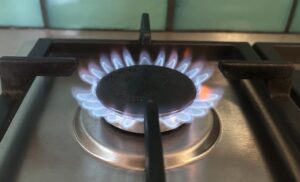 Are you excited by insulation? No?
Are you excited by insulation? No?
Would you like a house with virtually no heating bill? Yes?
Have you heard of a passivhaus? They’re quite wonderful.
A passive house (passivhaus) is a super insulated energy efficient home. The reason why you should want one is they have tiny heating bills, minimal carbon footprints, are flooded with natural light and enjoy superior levels of comfort to normal homes.
Maximising gains and minimising losses
The simplest way to really get the genius of a passivhaus is in terms of heat gains and losses. Because a house remains roughly the same temperature over the course of a year heat gains are equal to heat losses (it’s the law).
Heat gains come from a heating system, the sun’s warmth and internal gains from things like appliances and people. Heat losses occur through the walls, floor, roof, windows and doors or via ventilation in the form of air leakage.
If you take a look at the graphic at the top of this post, you’ll see three types of houses represented by their heat gains and losses as they might be in Nothern Europe, the top half of the US or any other temperate zone. In each case the heat losses match the gains. Look at the losses in each house and you can understand what makes the passivhaus special.
The leaky house has solid walls, poor loft insulation, an uninsulated floor, single glazed windows and lots of draughts. Because of this it needs 300 kilowatt-hours of heating for each square meter of space per year (kWh/m2a) just to stay warm.
The modern house has insulation in the wall cavity and loft, an insulated floor, double glazing and some draught excluders. Because of its better insulation it need just half the heating of the leaky house, 150 kWh/m2a, to maintain a similar internal temperature.
The passivhaus has superb insulation in all materials, triple glazed windows that face the equator to maximize solar gains, and is so air tight it uses a ventilation system to keep the air fresh. It needs just 15 kWh/m2a of heating, some of which comes from heat recovery in the ventilation system.
Because of these qualities a passivhaus has a tiny heating bill. That means a tiny carbon footprint too. There are now more than 30,000 of them around the world. They come in all shapes and sizes. They can be new build or retrofit, and have merit in both cold and hot climates.
Not just insulated but comfortable too
A passivhaus is a funny mix of rocket science and common sense. The technology used in a passivhaus costs more than in a typical home. To build a new one, or meet the retrofit standard, requires great materials, careful design and contractors that understand things like air-tightness and thermal bridging.
It is easy to look at the additional costs of a passivhaus and question the payback, particularly for a retrofit. But there is much more to a passivhaus than the trade off between upfront costs and heating bill savings.
Take one step inside a passivhaus in the dead of winter and you’ll get it. The passivhaus is all about superior comfort. In most houses some parts are too cold, others areas too hot while some bits are just right. A bit like Goldilocks and her porridge. Not so in a passivhaus.
In a passivhaus every square meter is close to the temperature you want it.
And comfort is truly valuable!
This article was originally published on Shrink That Footprint. Reproduced with permission










